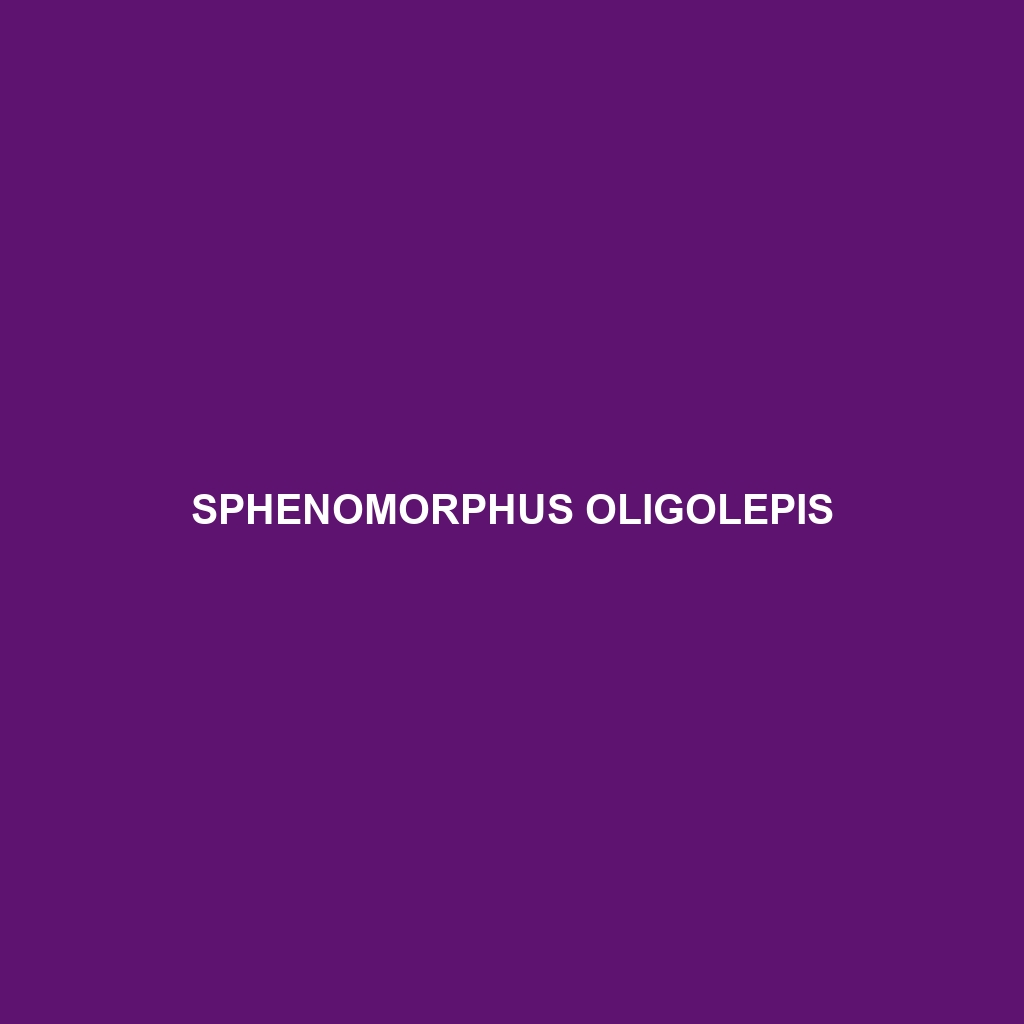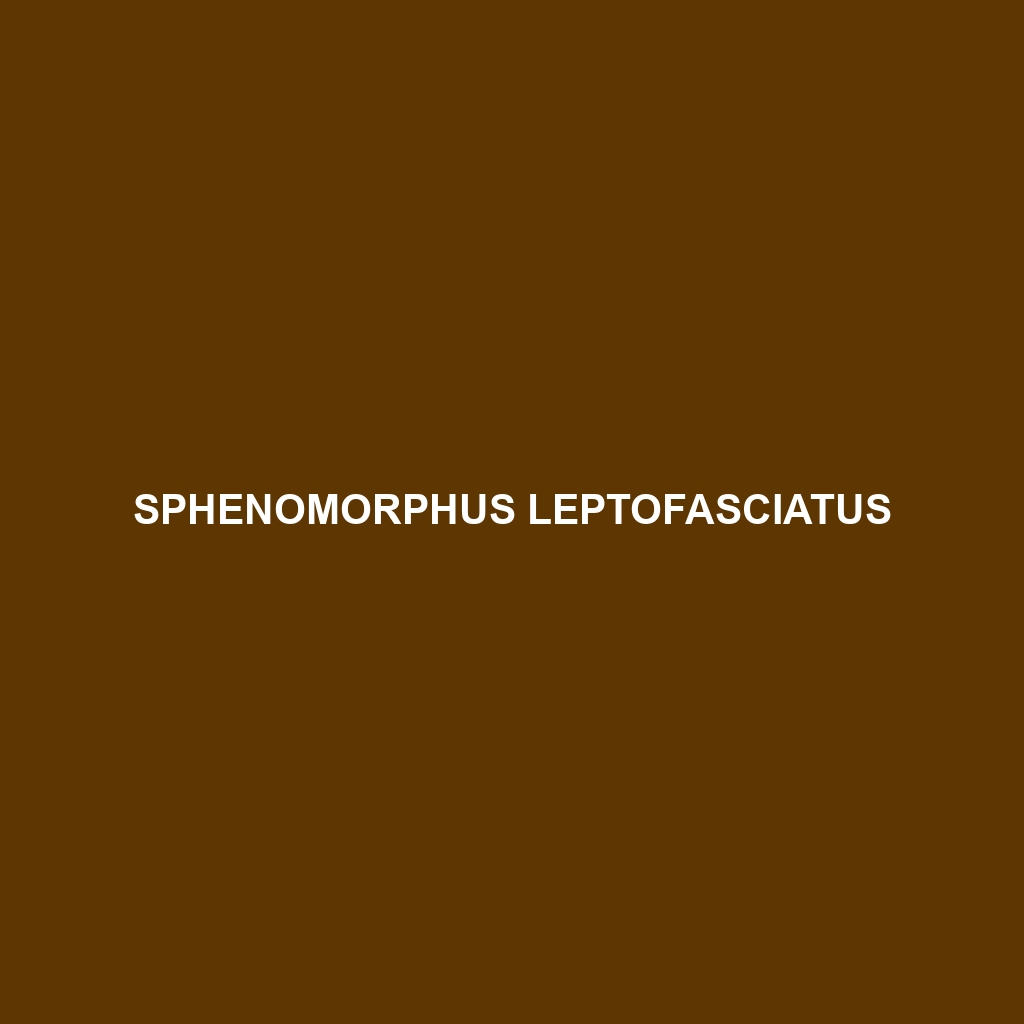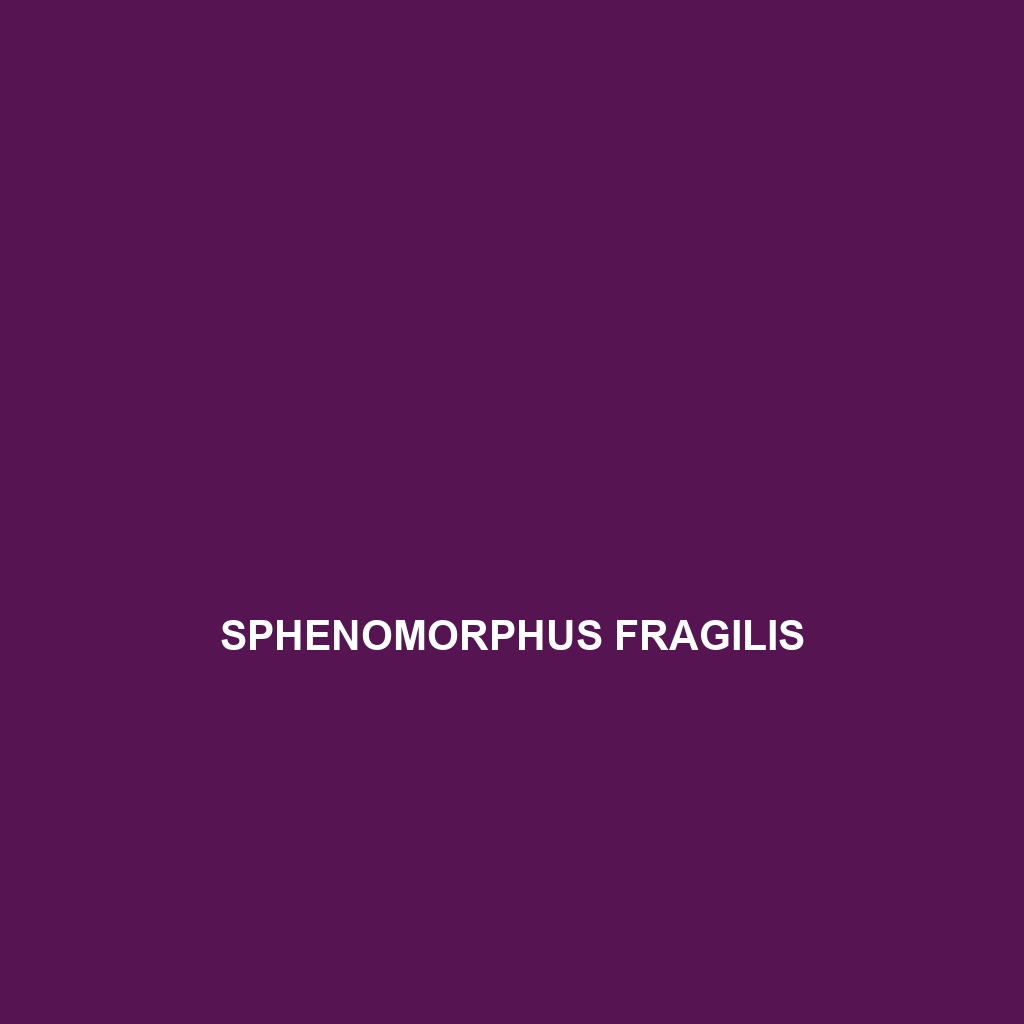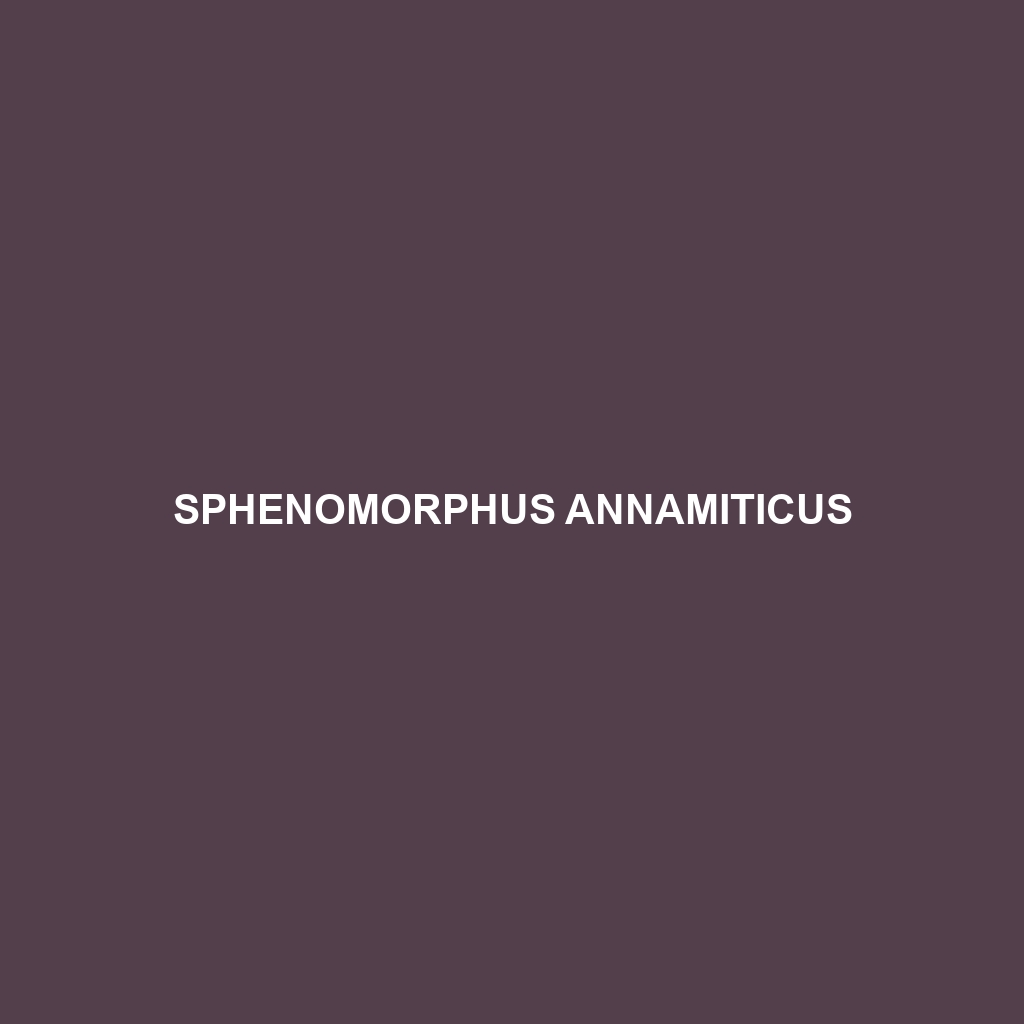<b>Discover the Phu Quoc skink (<i>Sphenomorphus phuquocensis</i>), a distinctive insectivore native to the rainforests and tropical savannas of Phu Quoc Island, Vietnam. Known for its unique coloration and burrowing behavior, this vulnerable species plays a crucial role in maintaining ecological balance as both predator and prey.</b>
Tag: insectivore
Sphenomorphus oligolepis
<b>Sphenomorphus oligolepis</b>, a medium-sized skink native to tropical and subtropical forests of Southeast Asia, features smooth, shiny scales and a varied coloration that aids in camouflage. As a diurnal insectivore, it plays a vital role in its ecosystem by controlling insect populations and serves as a crucial prey species for larger animals.
Sphenomorphus modiglianii
Discover the stunning Modigliani skink (Sphenomorphus modiglianii), a vibrant insectivorous lizard native to Southeast Asia's humid tropical rainforests and savannas. Known for its sleek body, striking colors, and diurnal behavior, this species plays a crucial role in its ecosystem by controlling insect populations and serving as prey for larger predators.
Sphenomorphus minutus
<b>Sphenomorphus minutus</b>, commonly known as the minute skink, is a small insectivorous lizard measuring 10-15 cm, found in tropical and subtropical rainforests of Southeast Asia. This diurnal species exhibits a streamlined body, regenerates its tail, and plays a crucial role in its ecosystem by regulating insect populations and contributing to soil health.
Sphenomorphus leptofasciatus
Sphenomorphus leptofasciatus, commonly known as the striped skink, is a vibrant greenish-brown reptile found in the rainforests of Southeast Asia, characterized by its distinct longitudinal stripes and a streamlined body measuring 10 to 15 cm in length. This diurnal insectivore plays a vital role in its ecosystem by controlling insect populations and serves as prey for larger predators, making it essential for maintaining ecological balance.
Sphenomorphus haasi
<p><b>Sphenomorphus haasi</b>, commonly found in the rainforests of Southeast Asia, is a slender skink measuring 15 to 30 cm in length, known for its brown or dark green coloration that offers excellent camouflage. As an insectivore, it plays a crucial role in its ecosystem by regulating insect populations while also serving as prey for various predators.</p>
Sphenomorphus fragilis
<b>Sphenomorphus fragilis</b>, commonly known as the fragile skink, is a slender, olive-brown skink found in Southeast Asia's humid rainforests. This diurnal insectivore thrives in dense vegetation and plays a critical role in the ecosystem by controlling insect populations and serving as prey for larger predators.
Sphenomorphus brunneus
<p><b>Sphenomorphus brunneus</b>, a small to medium-sized lizard found in Southeast Asia's rainforests, savannas, and temperate forests, is known for its rich brown coloration and nocturnal behavior. This insectivorous species plays a critical role in its ecosystem by maintaining insect populations and serves as a food source for larger predators.</p>
Sphenomorphus annamiticus
<p><b>Sphenomorphus annamiticus</b>, commonly known as the Annam skink, is a diurnal insectivore native to Southeast Asia, thriving in humid forests and grasslands. This slender skink measures 12 to 15 cm in length, features smooth, shiny scales for camouflage, and plays a crucial role in maintaining ecosystem balance by controlling insect populations and aiding soil health.</p>
Sphaerodactylus rhabdotus
<b>Sphaerodactylus rhabdotus</b>, commonly known as the Rhabdotus spherodactyl gecko, is a small, nocturnal lizard native to the rainforests of Central America, featuring earthy brown to vibrant green coloration for effective camouflage. This insectivorous species plays a crucial role in its ecosystem by controlling insect populations and serves as prey for larger animals, while exhibiting fascinating behaviors such as tail regeneration and slight color changes for enhanced survival.









